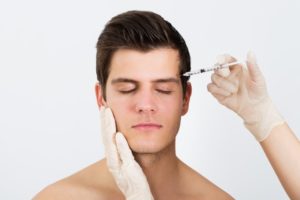Frequently Asked Questions About Botox® and Dysport®
According to the American Society for Aesthetic Plastic Surgery, cosmetic botulinum toxin injections (such as Botox® and Dysport®) are the most popular procedures performed by plastic surgeons in the US year after year. As common and minimally invasive as they are, these injections are still medical procedures that have risks and side effects, so as a patient, it’s a good idea to educate yourself about your procedure. To help your research process, I’m answering some of the most common questions I’ve been asked throughout my more than 20 years as a board-certified plastic surgeon specializing in facial rejuvenation.
What wrinkles can I treat with Botox® and Dysport®?
While some patients think all wrinkles can be treated with Botox® or Dysport®, this isn’t accurate. Because they work by relaxing (and therefore smoothing) facial muscles, these injections are most effective for wrinkles that are caused by tensed muscles due to repeated facial expressions. These include crow’s feet, frown lines between the eyebrows, and forehead creases.
How long will my Botox®/Dysport® treatment take and how much recovery time will I need?
One of my patients’ favorite aspects of Botox® and Dysport® injections is how convenient they are for facial rejuvenation. The treatment only takes 10-15 minutes to perform, and it doesn’t require any downtime. Many patients find it easy to have their procedure during one of their lunch breaks.
When and for how long will I see my Botox® or Dysport® results?
Because the injections are working with your body’s natural processes, it takes about 24-48 hours for the results to begin appearing, and they should reach their full effect within a week of your treatment. The results will generally last 3-4 months, though this will vary from patient to patient.
What’s the difference between Botox® and Dysport®?
Botox® and Dysport® are two companies’ versions of the same product. However, Dysport® is more highly purified, and in my own experience, it tends to have a longer-lasting effect and to be more effective in preventing the muscle contractions that cause future wrinkles to develop.
Are Botox® and Dysport® injections safe?
While there is a risk of potential side effects like temporary muscle weakness, bruising, or a headache from Botox® and Dysport®, the risk is very low. It’s important to note, though, that this risk increases dramatically when your injections are performed by someone who is less experienced and poorly trained. To ensure that your injections are as safe as possible, only get your treatment from a board-certified plastic surgeon with extensive experience and, ideally, with a specialty in facial rejuvenation.
I’ve heard Botox® and Dysport® are cheaper in other countries. Can I buy it elsewhere and then bring it to a plastic surgeon to inject?
This is very unsafe, and I do not administer injections with any product that has not come through the proper channels: to my office directly from the product’s manufacturer. Botox® and Dysport® are prescription-only products that are only sold to select medical professionals, so if you buy the products from any other source, there is a high likelihood that they are counterfeit and there is no way to know if it contains extremely dangerous ingredients.
There is a reason why Botox® and Dysport® are so enormously popular – because they treat such a common cosmetic issue and because they work very well. But as a patient, you still want to understand the procedure you’re receiving and ensure that it’s the best way to get the results you want. To find out if you’re a candidate, schedule an appointment with me, Dr. John LeRoy. For more helpful tips about cosmetic treatments, follow me on Facebook, Twitter, and Google+.

